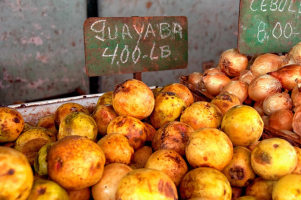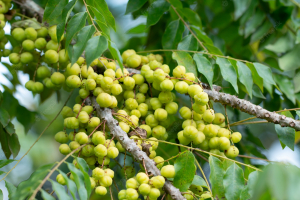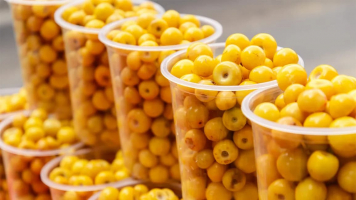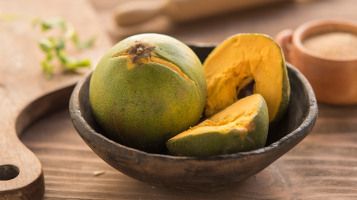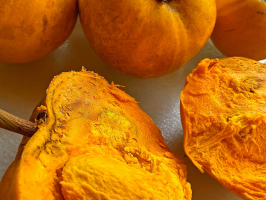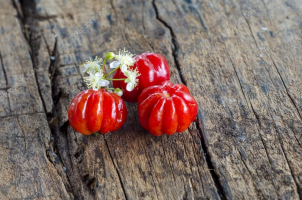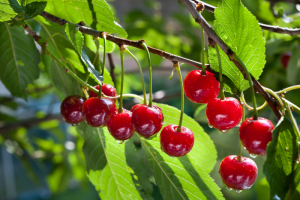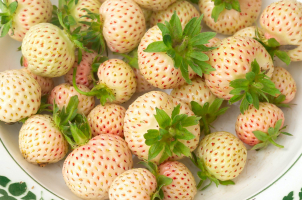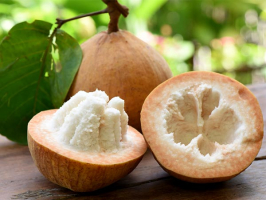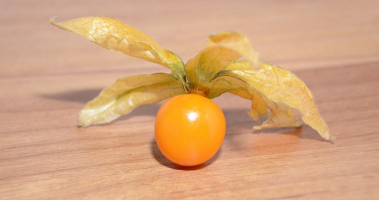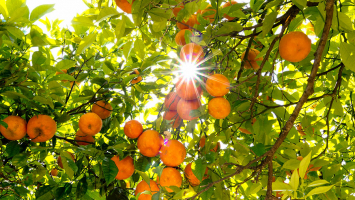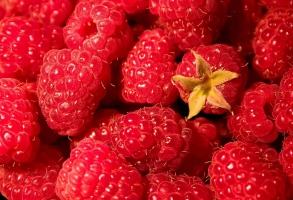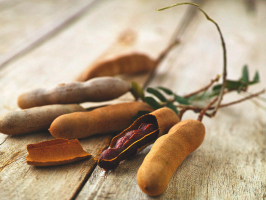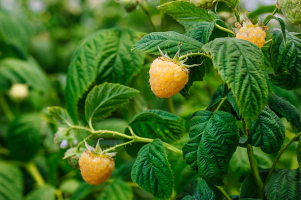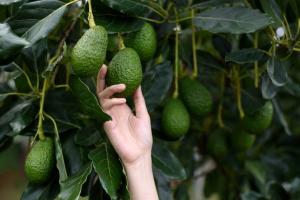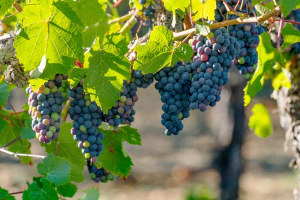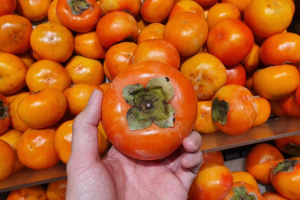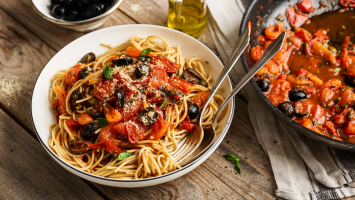Top 10 Most Delicious Indian Fruits
India ranks second in the list of largest fruit producers worldwide. The different geographic zones of the country deal in the production of the largest ... read more...varieties of Indian fruits. If you visit the fruit aisles of a supermarket, you will find an impressive assortment of Indian fruits laid out beautifully, and ready to be picked. However, the reality is the fruits that you find commonly at the stores are just a minuscule sample of a large number of exotic and delicious fruits available in India. With climates ranging from tropical to cold, the country has so much to offer when it comes to fruits. Below are the most delicious Indian fruits, let's find out!
-
Phalsa commonly referred to as Indian Sherbet berry and scientifically known as Grewia asiatica, is a seasonal crop, with summer being the primary fruiting period. The fruits remain fresh only for a short while upon harvest and hence must be consumed promptly. The phalsa tree is a short, shrubby tree with long, slender, and droopy limbs. Its large, oval-shaped, deciduous leaves eventually produce orange-yellow blooms. The fleshy, lighter-colored inside of the phalsa fruits has a darker purple to the black exterior. These drupes, which resemble grapes in both appearance and flavor, come in branching clusters and have a distinctively sweet and sour, tart flavor.
The phalsa fruit has an exceptional nutritional profile and is an exotic Indian berry with notable high water and moisture content. This fruit can be quickly absorbed by the body and has sufficient calories and simple sugars to supply the body's energy requirements. This small purple fruit has today, crossed its indigenous Asian environments and is being propagated as far as the warmer regions of North America and Australia so that people all over the world can obtain the marvelous advantages of phalsa, to boost overall health.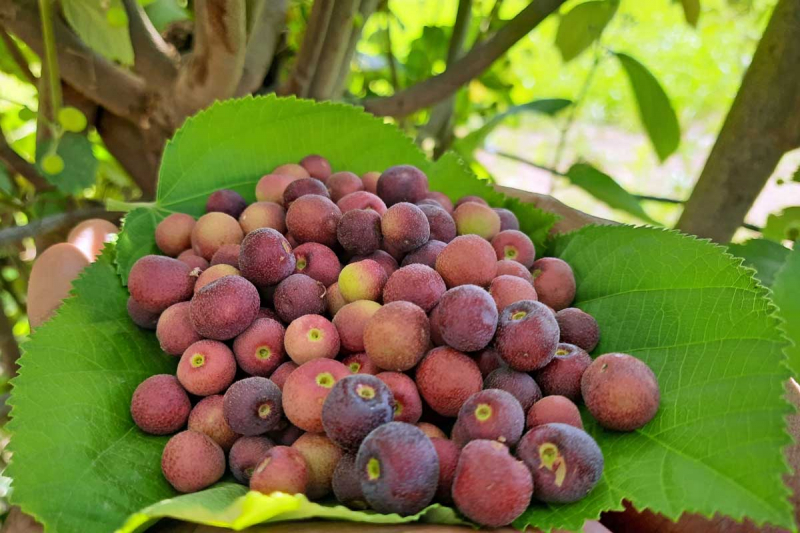
PeakD 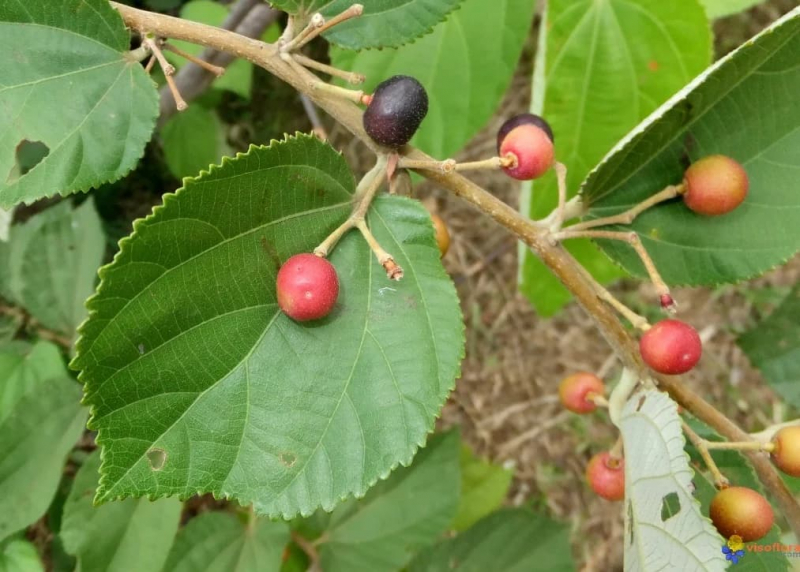
GreenParadiseLive -
Dasheri mangoes, botanically classified as Mangifera indica, are an Indian variety belonging to the Anacardiaceae family. Sweet fruits were discovered in the 18th century and are one of the oldest and most revered varieties in Northern India. Dasheri mangos are a popular seasonal summer fruit used in both raw and prepared recipes. They are known for their sweet flavor and juicy, smooth flesh. The Dasheri mango is also known by the regional names Dusari, Dashehari, Dusehri, and Dussehri. In India, Dasheri mangoes are renowned for helping to create new mango varietals. Due to its superior growth traits, the fragrant cultivar was chosen as the parent fruit of many mango varieties in Northern India, including Mallika and Amrapali.
Dasheri mangoes are small to medium-sized fruits with an elongated, straight oval shape and blunt, curving ends, measuring 9 to 15 centimeters in length on average. When ripe, the semi-thick, smooth, leathery, and faintly waxy skin, which is initially light green to yellow-green in color, turns a golden yellow. The medium-sized stone is enclosed within the orange flesh, which is soft, succulent, and nearly fiberless beneath the surface. Dasheri mangoes have a strong perfume that is tropical and nectarine-like. The fruit's flesh is incredibly sweet and has notes of fruit, the tropics, and a hint of tang.
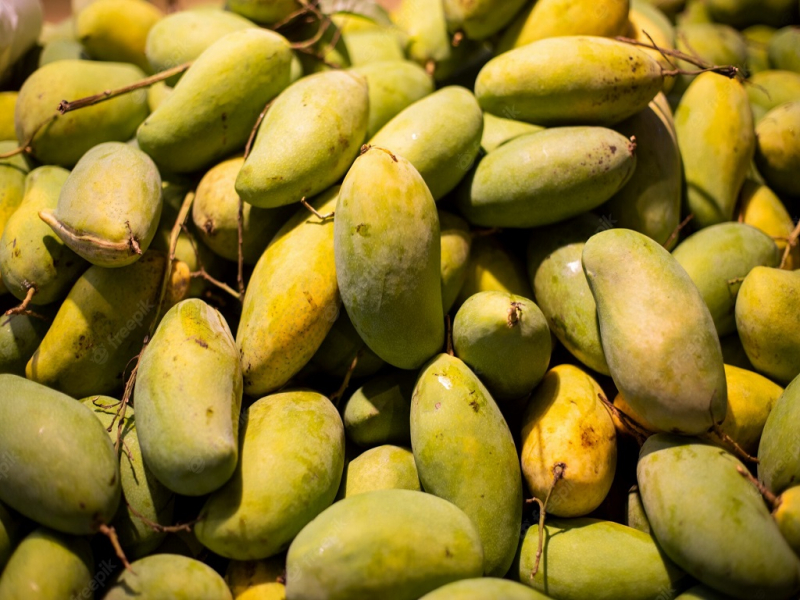
Krishi Jagran 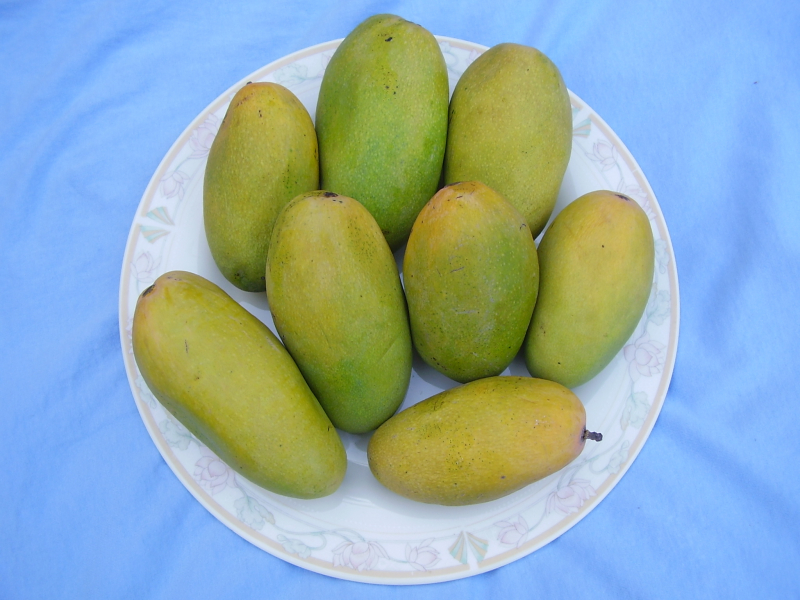
Wikipedia -
Manilkara hexandra popularly known as Ceylon Iron Wood or khirni is a tree species in the tribe Sapoteae, in the family Sapotaceae. It is cultivated widely in the Central regions and Deccan Peninsula in India. Khirni is the local name used popularly in India and South Asian countries. Khirni fruits contain abundant reserves of proteins, carbohydrates, and useful fats, for optimal growth and development of the body.
Khirni is a small to a medium-sized glabrous evergreen tree that typically grows between 12 and 25 meters tall and one to three meters in trunk circumference. It is slow-growing but rather huge. Tropical and temperate woodlands are where it flourishes. Rough, fractured, and longitudinally fissured, blackish-gray bark. The density of the wood, which varies depending on the degree of drying, is said to range from roughly 0.83 to 1.08 tons per cubic meter. The wood is tough, strong, and heavy. It is utilized for large beams, heavy structural work, and gate posts. One seeded berry, 1.5 mm long and 8 mm wide, with an obovoid-oblong or ellipsoid shape, follows fertile flowers. They are initially green turning to reddish-yellow as they mature. Seeds are ovoid and about 1 cm long, reddish brown with shining testa.
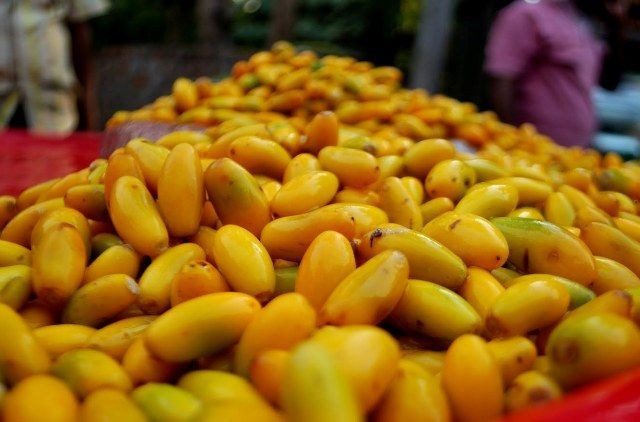
Pinterest 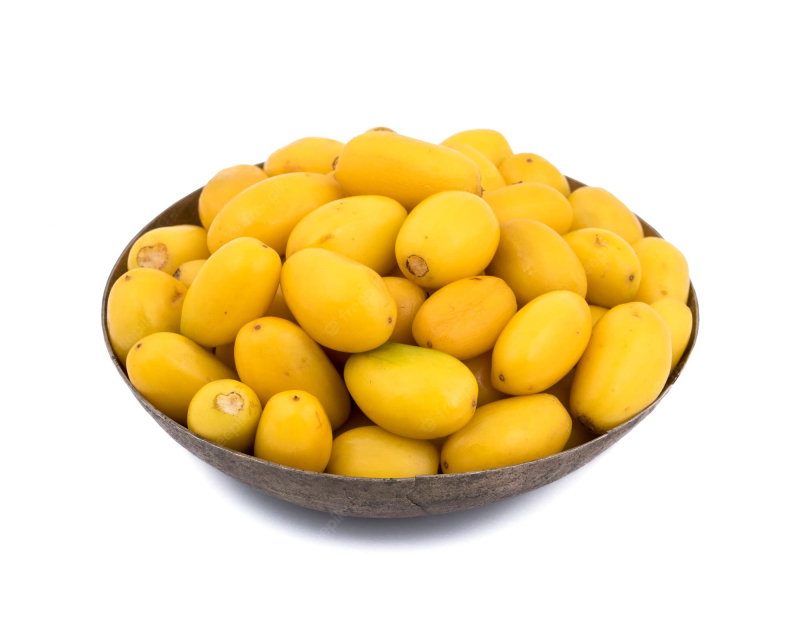
Freepik -
Jamuns are small tropical fruits belonging to the Myrtaceae family. Native to the Indian subcontinent, where the trees have been valued for their wood, fruit, and shaded canopy since ancient times, the colored, saturated berries grow on evergreen trees that can grow up to 30 meters tall. Jamun fruits, which are also referred to by the names Jaam, Jambul, Java plum, Jambolan, Nerale, and Mahaphala, are frequently cultivated in backyard gardens, city streets, and other public spaces. The trees have a long lifespan of over 100 years and are extremely productive, producing 50 to 60 kg of fruit per season. Jamun fruits are only taken when they are fully mature; once picked, they stop developing. The fruits are used for a wide range of raw and cooked recipes and are gathered and sold fresh every day.
Averaging 1 to 5 centimeters in length, Jamun fruits have a tiny, oblong to ovoid form with curving, blunt ends. Depending on the fruit's development, the thin, glossy, crisp skin has a variety of colors. When immature, Jamun fruits are green; as they age, they change to variegated shades of green, pink, and red; and when fully ripe, they take on a deep purple, nearly black tint. Jamun fruits have an astringent aftertaste that is followed by a flavor that is delicately sweet, acidic, and sour. Each fruit will have a different level of sweetness, and it's crucial to remember that after eating a fruit, the juice may stain your lips and tongue, sometimes for several hours.
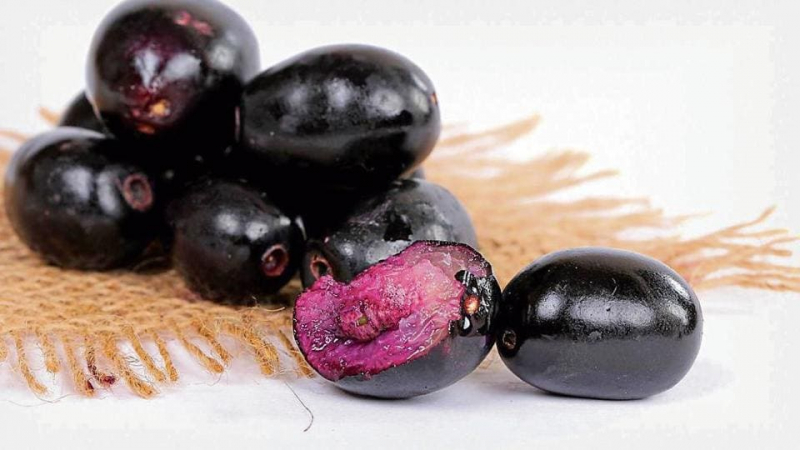
Hindustan Times 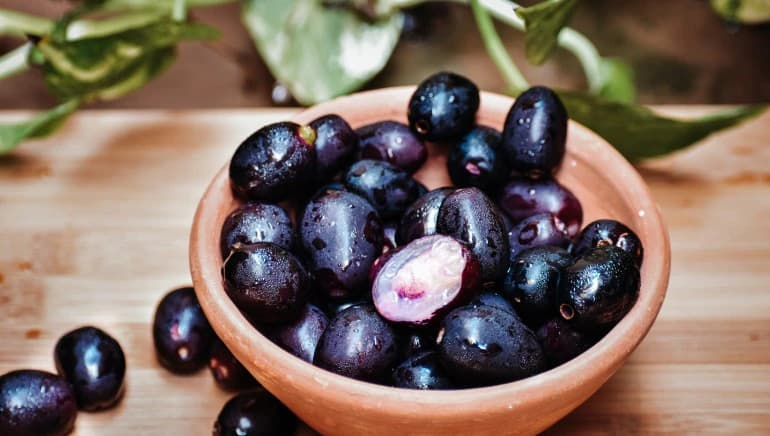
Healthshots -
Nephelium ramboutan-ake, the pulasan, is a tropical fruit in the soapberry family Sapindaceae. It is closely related to the rambutan and sometimes confused with it. Other related soapberry family fruits include lychee and longan. It has its origin in Peninsular Malaysia, and its name comes from the word “Pulas” (twist) in Malay. Also, it is an excellent Thai dessert loved by many tourists. Sweetness is the primary flavor, and it is sweeter than Rambutan. It is famous in Kerala of India.
When ripe, pulasan have a thick, leathery rind that is often dark red or occasionally yellow and grows to be approximately 5 cm broad and 6 cm long. The fruit most closely resembles a rambutan because of its conical shape and skin, which is coated in short, thick, stubby spines. The white, juicy, and delicious flesh of the pasan, which makes about 25–30% of the fruit's weight, is revealed when the fruit is opened by twisting it with both hands in a manner most similar to a lychee. Fruits from the pulasan tree are harvested twice a year, in the spring and the fall.
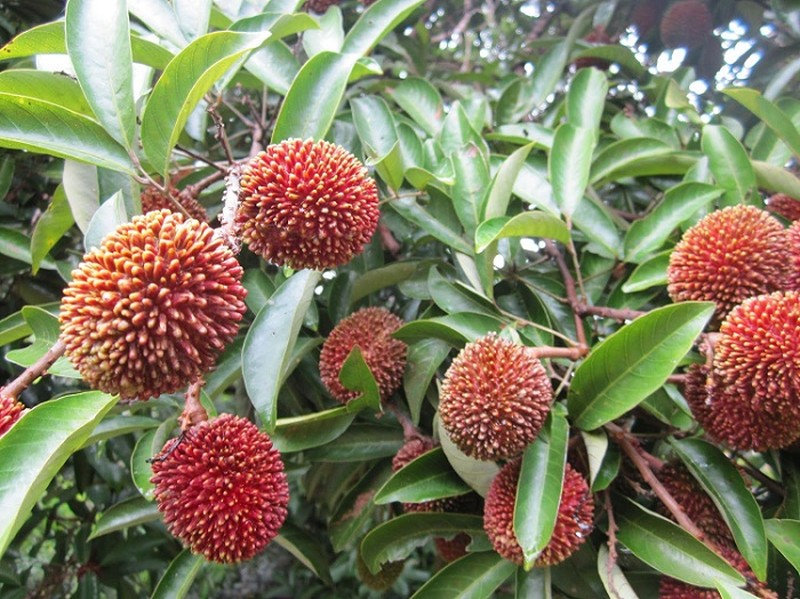
i Stock 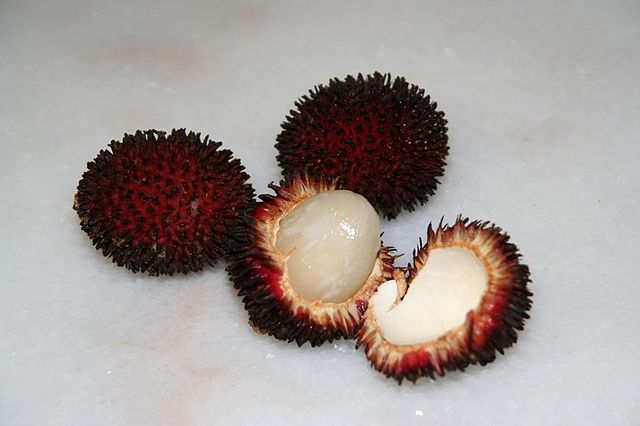
Wikipedia -
The mangosteen, botanically named Garcinia magostana, is also nicknamed the “Queen of Fruits”. The trees are cultivated primarily on small-scale farms and sold at local markets throughout Southeast Asia. Mangosteen cultivation vigorously develops in the Nilgiri hills and Southern India. Mangosteen offers a variety of essential vitamins, minerals, and fiber, and has been used to treat an array of health concerns, from blood sugar control to weight loss, to maintaining healthy skin, though more studies on the fruit’s health benefits are needed to support certain correlations.
Tropical mangosteens have a diameter of five to seven centimeters, making them about the same size as a tangerine. It has a thick, leathery, smooth, burgundy shell with four to eight flat, woody lobes grouped in a rosette at the tip. An average of five to six triangular segments of white, juicy, soft flesh, with only a few flat seeds, are enclosed in the thick skin. These segments have a flowery aroma and are typically five or six in number. Actually, there is a correlation between the number of lobes at the fruit's outer apex and the interior segmentation. With lychee, peach, strawberry, pineapple, caramel, or butter overtones as well as a sweet-tart tropical flavor, mangosteens are a popular fruit.

Healthline 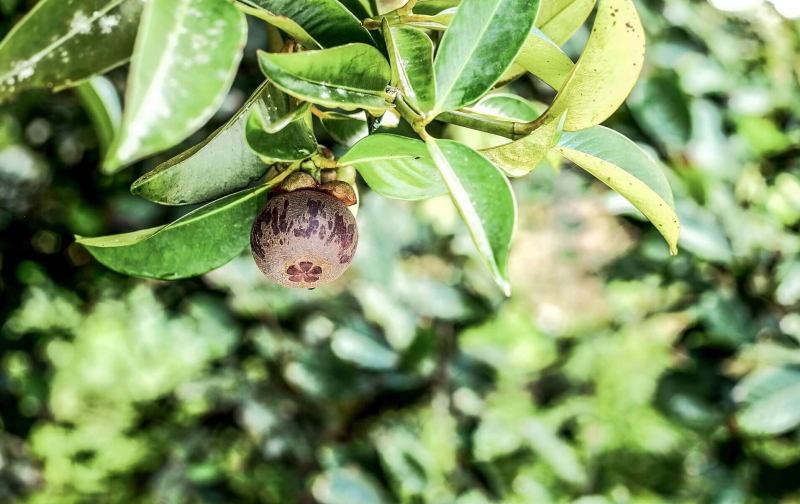
KTCHNrebel -
Lansium parasiticum, commonly known as langsat or Longkong in English; duku in Indonesian or dokong in Terengganu Malay, is a species of tree in the Mahogany family with commercially cultivated edible fruits. It is common in eastern and southern India, and the Nilgiri hills are the place that has the most Langsat in India. Langsat is a nutritionally rich fruit containing many vital elements like proteins, carbohydrates, minerals, vitamins, and dietary fiber in abundance. It is rich in vitamin A, thiamine, and riboflavin, which are necessary for many body functions.
A shrub called langsat produces tiny delicious fruits. These fruits resemble potatoes from the outside, yet they have white flesh inside that contains bitter, inedible seeds. Duku is the name for the langsat kind that is greater in size. It grows in India's southern Nilgiri highlands from April to September. These fruits taste a lot like grapes and have an acidic, sour, and sweet flavor combination. Some people compare its flavor to that of a pomelo. When ripe, its aril is juicy and transparent. The flavor of langsat is incredibly unusual and refreshing when fully mature.
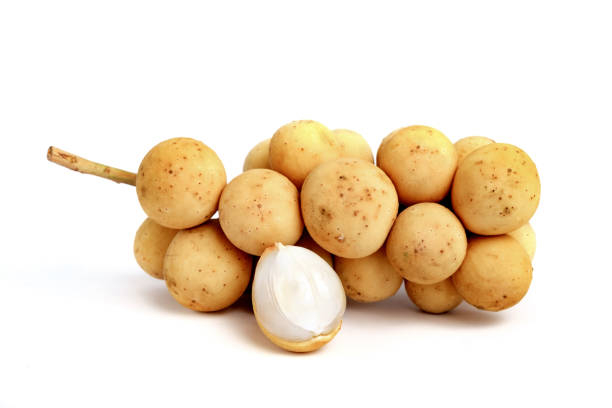
iStock 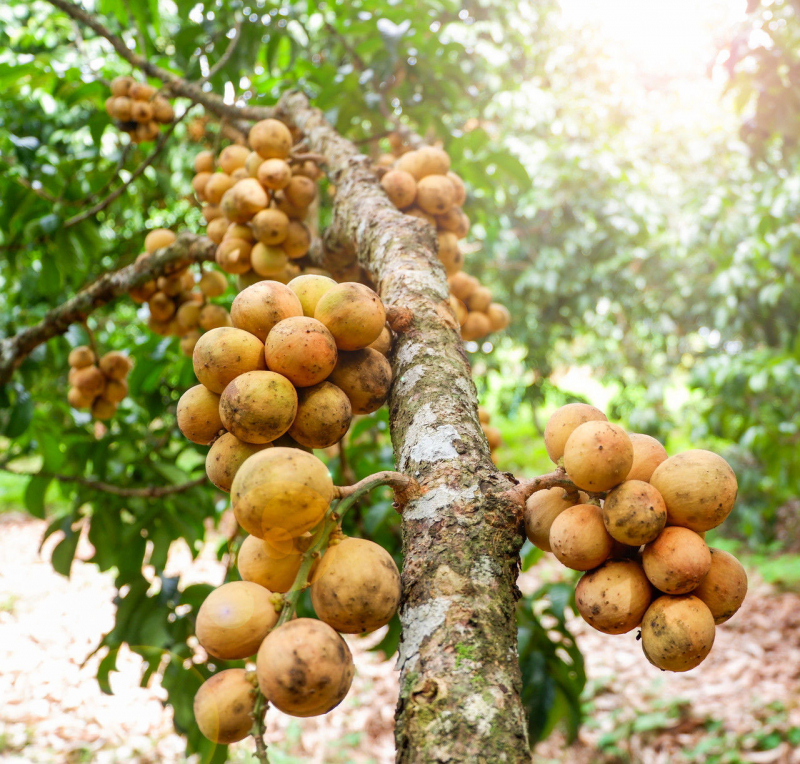
M-Tech Gardens -
Wood apples, botanically classified as Limonia acidissima, are hard-shelled fruits belonging to the Rutaceae family. There are two varieties of Wood apples; the larger, more common variety and a smaller variety known for its acidic nature, found throughout Asia and Southeast Asia. Wood apples are especially favored in India and Sri Lanka for their unique flavor and purifying properties. It is important to note that Wood apples are sometimes confused with bael fruit and may be called bael in local markets, but the two fruits are different species.
Wood apples have a shell that is tough, woody, white to light brown, and has a rough texture akin to tree bark. They have the appearance of little coconuts and range in size from 5 to 12 cm. Fruit is dropped on the ground from a height of about one foot to determine its ripeness; if the fruit bounces, it is not ripe. When young, the Wood apple's pulp or flesh is ivory-colored; as it ages, it turns orange-brown or dark brown. The flesh is sticky, mealy, and creamy when the rind is cracked open. White, crunchy, eatable seeds as well as the rare fibrous string can be found inside the meat. A unique blend of sweet, sour, and acidic flavors that are evocative of tamarind, eggnog, raisins, and strong cheeses may be found in wood apples.
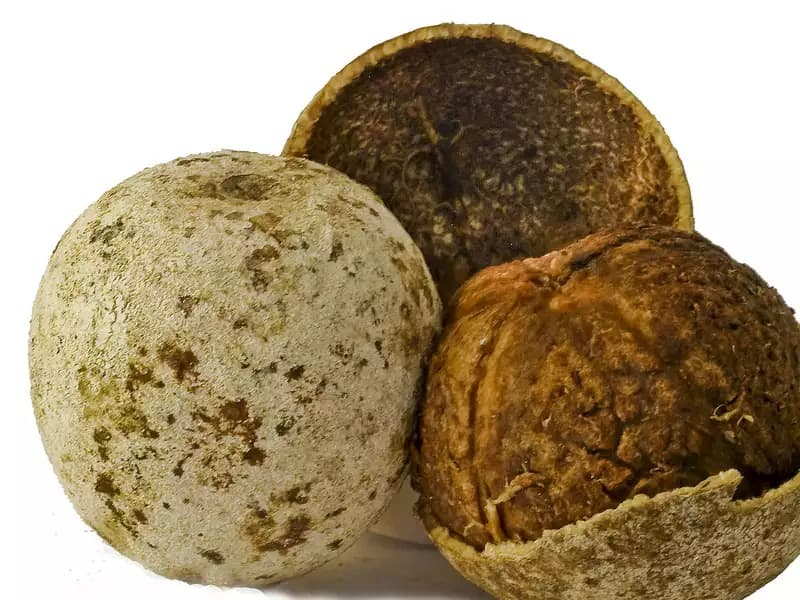
Times Food Aamchi Mumbai -
Ber fruit is botanically classified as Ziziphus mauritiana, and is a member of the Rhamnaceae, or jujube, family. Ber fruit is also referred to as Indian Jujube, Beri Fruit, Indian Plum, and Indian Cherry. Ber fruit comes in almost 90 different varieties. Ber is a plant native to the tropics and subtropics that is related to the more popular Chinese jujube, which thrives in more temperate climates. A pigment that is derived from the Ber fruit is also used as a natural dye for silk. The Ber tree can produce up to 30,000 fruits per year, most of which are consumed.
Ber fruit is a little fruit with a round to oblong form and thin, glossy skin. As they ripen, their color changes from light green or yellow to orange-red. Both slightly underripe and ripe fruit are edible. Underripe fruits have white flesh that is dense, crisp, and astringent, whereas fully ripe fruits have flesh that is more spongy, somewhat mealy, and have a more subdued floral flavor. A hard, inedible stone is located in the center of each fruit. Ber fruits are borne on diminutive, bushy trees that can develop to a height of 12 meters. Ber fruit is available in the spring and fall months.
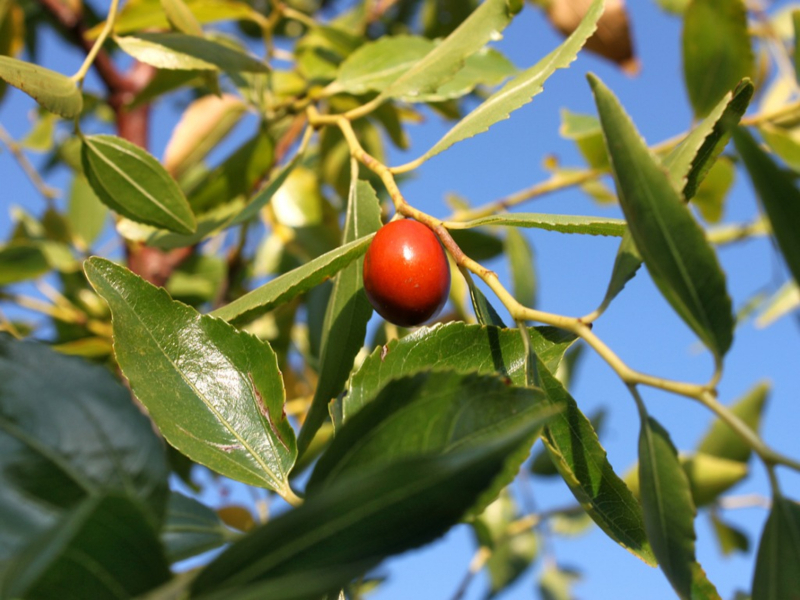
Gardening Know How 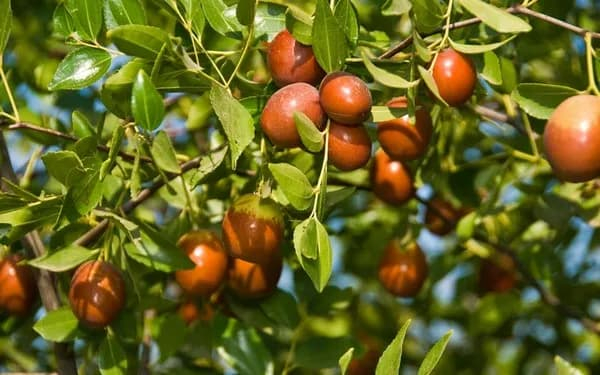
iStock -
Rose apples, botanically classified as Syzygium Jambos, are small, tropical fruits belonging to the Myrtaceae or myrtle family. It is used widely in the East Godavari district of Andhra Pradesh and Kerala. In India, people usually call it Champakka. The little fruits are also referred to as Malabar plums and Plum roses. Despite its name, Rose apples are neither roses nor apples. They got their name from a combination of their slight rose flavor and crisp, apple-like texture.
Rose apples are petite, with a diameter ranging from 2 to 5 centimeters, a round to oval form, a point on the stemless end, and a green calyx on top. With maturity, the skin turns from green to a bright yellow and is smooth, waxy, thin, and taut. The flesh is white to pale yellow on the inside, crisp, spongy, and semi-dry, and it has a light floral odor. The flesh also protects a hollow chamber that contains one to four tough, brown seeds. When the seeds are ripe, they separate from the cavity and rattle when the fruit is shaken. Rose apples are delicate and crunchy with a flavor that begins sweet and fruity and ends with rose floral undertones.
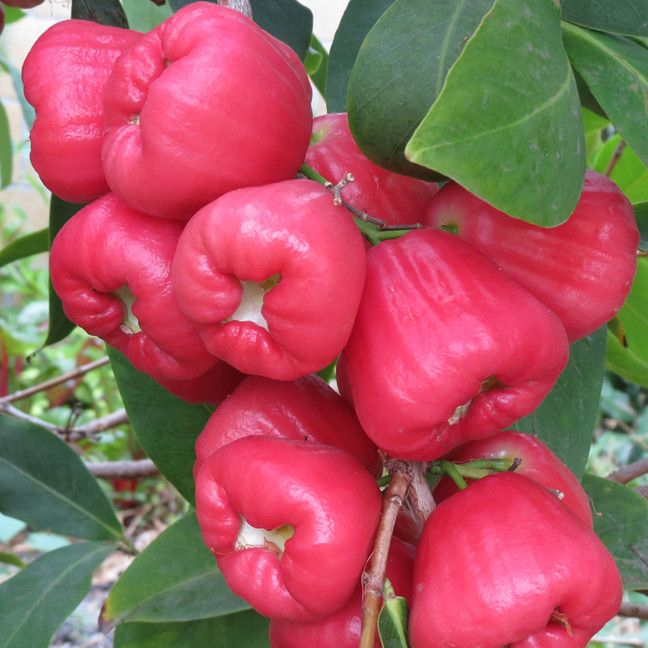
Pinterest 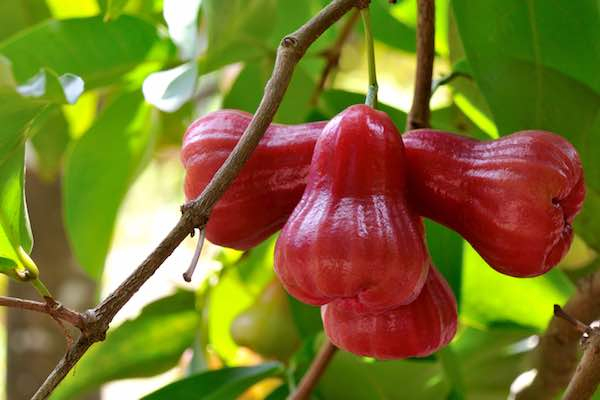
Minnetonka Orchards












